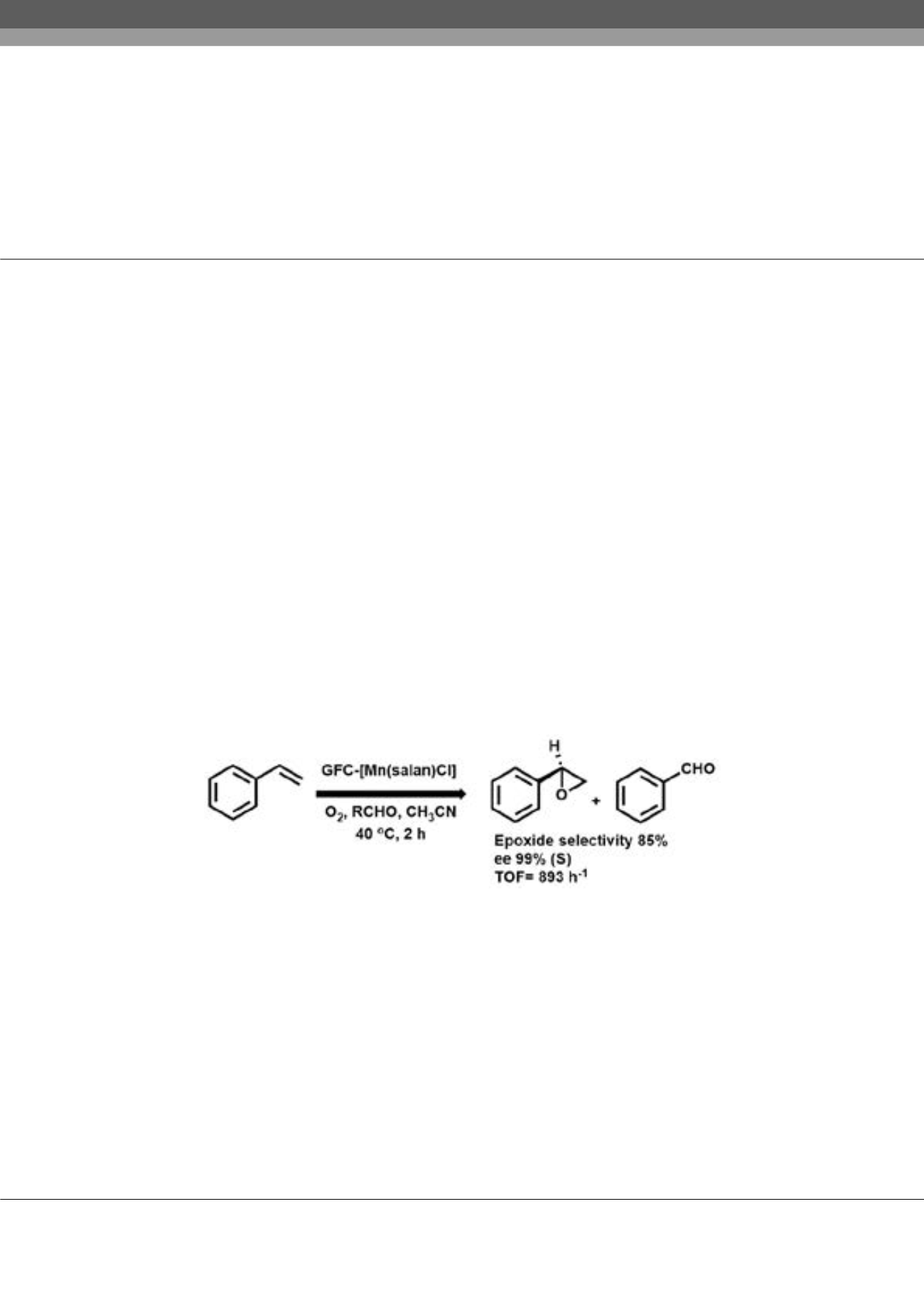

Notes:
Volume 3, Issue 2 (Suppl)
Trends in Green chem
ISSN: 2471-9889
Environmental & Green Chemistry 2017
July 24-26, 2017
Page 98
5
th
International Conference on
6
th
International Conference on
July 24-26, 2017 Rome, Italy
Environmental Chemistry and Engineering
Green Chemistry and Technology
&
Manganese-salan complex immobilized on reduced graphene oxide: A recyclable catalyst for aerobic
enantioselective epoxidation of olefins
Hassan Hosseini-Monfared
and
Vahideh Abbasi
University of Zanjan, Iran
C
hiral compounds are commonly required in pharma, agrochemical and fine chemical sectors. More importantly, there is a strong
demand for the pure enantiomers in pharmaceutical industry. Various desirable chiral products can be synthesized using chiral
epoxides by stereospecific ring-opening reactions. Catalytic asymmetric oxidation of olefins by various oxygen donors can be used
to prepare chiral epoxides. From the point of view of green and sustainable chemistry, molecular oxygen is an ideal oxidant with
regard to its natural, inexpensive and environmentally friendly characters. Salen (bis(salicylidene)ethylenediamine) and salan (N,N'-
bis(o-hydroxybenzyl)-1,2-diaminocyclohexane) ligands are an important class of tetradentate dianionic ligands in the chemistry
of transition metals. Chiral salans have been known as effective ligands for asymmetric synthesis because of their more flexibility
which let to be modified easily with respect to salen ligands. Chiral salan compounds have been used as a fluorescent sensor for
CuCl and salan-Cu complex for the selective recognition and discrimination of protected
α
-amino acids. In this study, a chiral
Mn(III) complex of the reduced salen ligand (salen = (1R,2R)-(-)-(N,N'-bis(5-chloromethylsalicylidene)cyclohexane-diamine) was
synthesized and covalently grafted onto carbon coated magnetic Fe
3
O
4
nanoparticles decorated reduced graphene oxide sheets (GFC).
The catalyst was characterized by FT-IR, UV/Vis, XRD, SEM and vibrating sample magnetometer (VSM) techniques. The synthesized
GFC-[Mn(salan)Cl] was employed in the aerobic enantioselective epoxidation of non-functionalized olefins. The effects of reaction
variables such as temperature, time and solvent on the catalytic performance were systematically investigated. The catalyst was found
to be highly active and enantioselective for epoxidation of styrene (Scheme 1), alpha-methyl styrene and trans-stilbene. Catalyst
GFC-[Mn(salan)Cl] is stable and could be recycled at least five times without loss of its catalytic activity.
Scheme 1: Catalytic oxidation of styrene with O
2
.
Biography
Hassan Hosseini-Monfared has research focus on applied homogeneous and nanostructured heterogeneous catalysis, the development and application of new,
environmentally benign catalysts, asymmetric catalysis and synthetic methods.
monfared@znu.ac.irHassan Hosseini-Monfared et al., Trends in Green chem, 3:2
DOI: 10.21767/2471-9889-C1-003
















